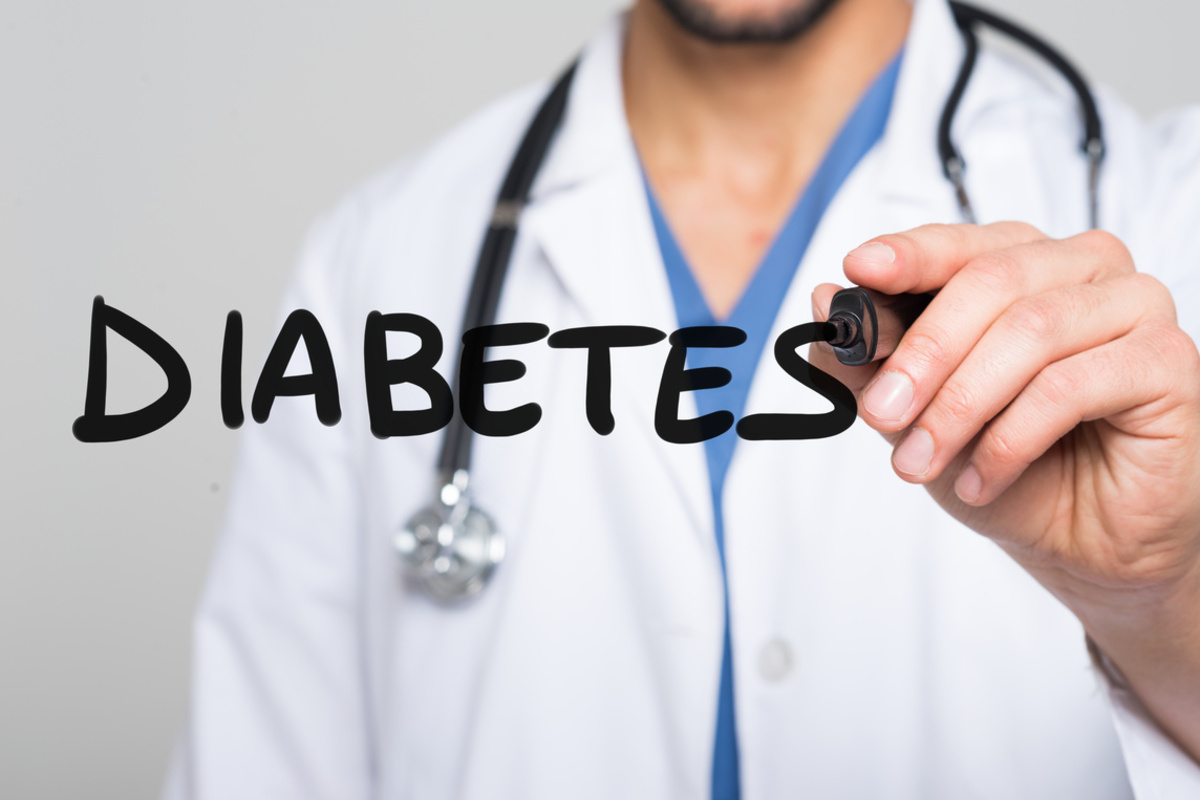Type 1 diabetes is a condition in which patients have high blood glucose (sugar) levels. Type 1 diabetes develops because the pancreas does not produce enough insulin, a hormone that is responsible for glucose metabolism. Type 1 diabetes can develop at any age, but is commonly diagnosed in children.

Type 1 diabetes is an autoimmune disease, which means that it develops as a result of an impaired immune system. In healthy people, the immune system is there to protect us from foreign pathogens. However, in people with autoimmune disease, such as type 1 diabetes, the immune system mistakes healthy cells for a threat. In the case of type 1 diabetes, the immune system attacks and destroys cells of the pancreas that make insulin.
Prevention: Is there any way to prevent type 1 diabetes?
Unfortunately, there is no way to prevent type 1 diabetes, unlike its counterpart type 2 diabetes which can be avoided by following certain lifestyle factors.
Symptoms of type 1 diabetes
Symptoms of type 1 diabetes include:
- Excessive thirst
- Excessive hunger
- Excessive urination
- Blurred vision
- Impaired vision
- Feeling tired
- Feeling fatigued
- Bed wetting in children
- Unexplained weight loss
If you experience any of these symptoms, you should report them to your doctor — who will then conduct testing to figure out if you have diabetes.
Diagnosis: How is type 1 diabetes diagnosed?
If your doctor suspects that you may have type 1 diabetes, then they can ask you to undergo one or more different types of blood tests. These tests include:
- Random blood sugar test. This is the first-pass test that will be given to a child with suspected type 1 diabetes. This test involves drawing blood randomly at any point in the day, regardless of what the child has previously eaten. If the blood sugar levels are more than 200 milligrams per deciliter (mg/dL), then that suggests a diagnosis of diabetes.
- Glycated hemoglobin test. This test is able to determine the average blood sugar levels for the past two to three months as it measures the amount of blood sugar that is attached to hemoglobin (an oxygen carrying protein). A score higher than 6.5 percent on the test on two different occasions suggests diabetes.
- Fasting blood sugar test. This involves drawing blood after an overnight fast. In this case, a blood sugar level of more than 125 mg/dL suggests type 1 diabetes.
- Blood tests to look for specific antibodies present in patients with type 1 diabetes.
- Urine test to look for ketones, which can help distinguish between type 1 and type 2 diabetes.
Treatment: How is type 1 diabetes managed?
Patients with type 1 diabetes will need to take insulin for life. It is absolutely vital for patients to take insulin as long periods of time with high blood sugar levels can lead to serious complications.
Patients that have type 1 diabetes should be taking insulin numerous times throughout the day. This is particularly true around mealtimes since you will need insulin to be able to metabolize the glucose that will be consumed during the meal. Here the different ways you can take insulin:
- Injections of insulin
- Insulin through a pump. This can be integrated with blood sugar monitors, which senses when your blood sugar levels are high and will increase the amount of insulin going into your body. This requires the patient to wear both the blood sugar monitor and the insulin pump, which will talk to each other to determine when more insulin is need to be pumped. However, you should also be checking your blood sugar levels manually to make sure you are on the right track.
- Inhaled insulin (which is only used during meal-times).
One important thing to remember is that it is not just taking the insulin but also the timing of when you take insulin. You should work closely with your doctor to design a schedule for when you should be taking insulin in order to optimally manage your condition.
Treatment for type 1 diabetes is absolutely vital because several complications can result when blood sugar levels are uncontrolled. These include:
- Diabetic retinopathy. High levels of glucose can cause certain regions of the eye to become weak, and the blood vessels that supply blood to the eye might rupture. This leads to vision problems.
- Diabetic neuropathy. High sugar levels causes damage to nerves, leading to numbness, tingling and pain in different parts of the body.
- Diabetic nephropathy. Large amounts of sugar in blood can cause the kidney to be overworked, leading to kidney disease.
- Cardiovascular disease
- Gum disease
- Depression
- Karvonen, M., et al. "A review of the recent epidemiological data on the worldwide incidence of type 1 (insulin-dependent) diabetes mellitus." Diabetologia 36.10 (1993): 883-892.
- American Diabetes Association. "Screening for diabetes." Diabetes care 25.suppl 1 (2002): s21-s24.
- Atkinson, Mark A., and George S. Eisenbarth. "Type 1 diabetes: new perspectives on disease pathogenesis and treatment." The Lancet 358.9277 (2001): 221-229.
- Photo courtesy of SteadyHealth


Your thoughts on this